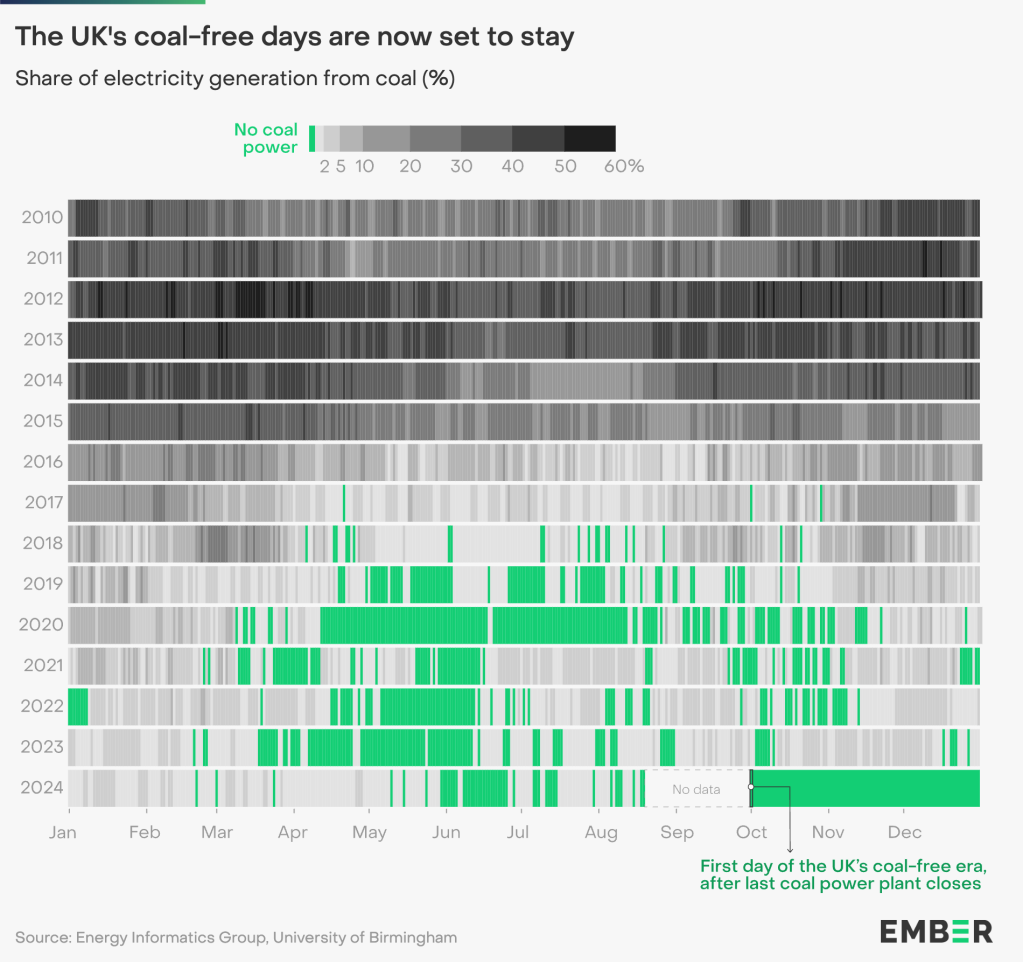
The UK has marked a historic moment in its energy transition by shuttering the Ratcliffe-on-Soar Power Station in Nottinghamshire, its last remaining coal power plant.
“This is the final chapter of a remarkably swift transition from the country that started the Industrial Revolution,” said Phil MacDonald, managing director of global energy think tank Ember.
The world’s first coal power plant opened in London in 1882, and as recently as 2012, coal powered 39% of the UK’s electricity supply. However, Ember’s data shows how this dropped rapidly in the following years, remaining at 2% or lower since 2019.
Ember’s report, “The UK’s journey to a coal power phase-out,” outlines the five key factors that facilitated the UK’s rapid exit from coal: announcing a 2025 coal exit a decade in advance, putting a price on carbon, backing offshore wind, market reforms to encourage renewable energy, and investing in the grid.
“The UK provided both the carrots and the sticks,” said Phil MacDonald, managing director of Ember. “It’s important to signal that polluting sources have an end date, but also to provide an enabling environment to build the new clean energy system.”
The UK predominantly replaced coal with wind and solar, without increasing reliance on gas. The country is now targeting a fully decarbonized power system by 2030.
The UK’s coal phase-out has brought many benefits, reducing both emissions and costs. The rapid decline in coal power since 2012 avoided 880 million tonnes of emissions, which is equivalent to more than double the UK’s total economy-wide emissions in 2023. Ember calculates that the replacement of coal with wind and solar avoided an estimated £2.9 billion in costs.

The UK’s last coal plant closure means that more than a third of Organisation for Economic Co-operation and Development (OECD) countries are now coal-free, with three-quarters expected to eliminate coal power by 2030, aligning with global climate goals to limit warming to 1.5C.
Coal now accounts for just 17% of electricity generation in OECD countries, down from 36% at its peak in 2007. The rapid growth in solar and wind was responsible for 87% of the fall in coal during this period.
“Once, coal power was a byword for industrial growth,” continued Mr MacDonald. “Now clean energy is driving economies – and not just in high-income countries, but throughout the world.”
Read more: The world’s only coal-to-nuclear reactor plant just broke ground in Wyoming
To limit power outages and make your home more resilient, consider going solar with a battery storage system. In order to find a trusted, reliable solar installer near you that offers competitive pricing, check out EnergySage, a free service that makes it easy for you to go solar. They have hundreds of pre-vetted solar installers competing for your business, ensuring you get high-quality solutions and save 20-30% compared to going it alone. Plus, it’s free to use and you won’t get sales calls until you select an installer and you share your phone number with them.
Your personalized solar quotes are easy to compare online and you’ll get access to unbiased Energy Advisers to help you every step of the way. Get started here. –trusted affiliate link*
FTC: We use income earning auto affiliate links. More.













